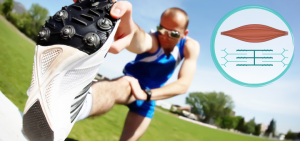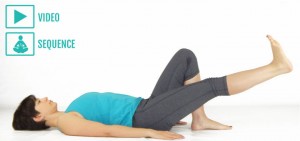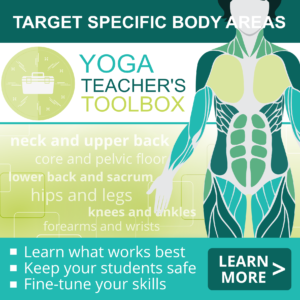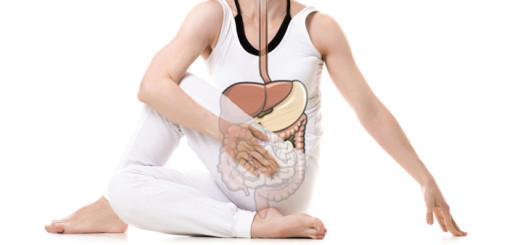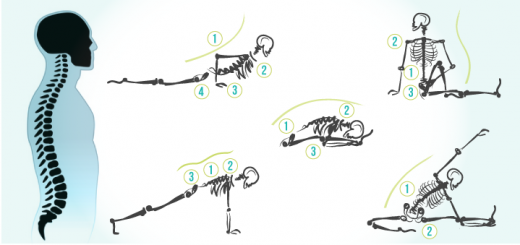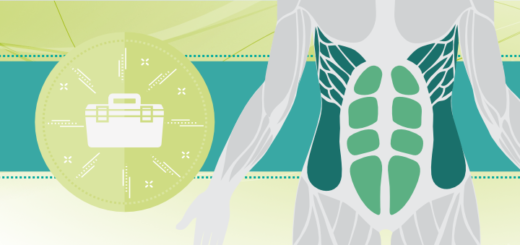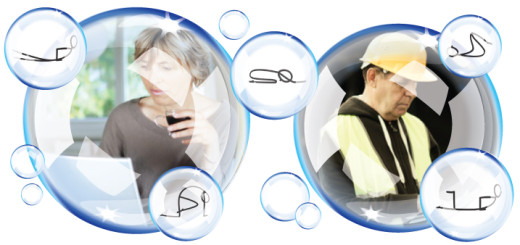
Whenever you design a class or a private yoga session to address tension in hip flexors, extensors and QL, it helps to remember the following important points:
- Your hip muscles manage complex relationships between your spine, pelvis and legs. Those structures need to properly transfer the weight of the upper body (head, ribcage, spine, organs, muscles, etc.) through the sacrum, into the pelvis, into the legs and then into the earth, both at rest and in motion. That is why we need to develop stability and symmetry when working with the hips.
- Asymmetry and instability in the hips can lead to pain. Very often we position our bodies and habitually move them in a way that creates or reinforces those imbalances. We have to identify those habitual patterns, stop them or modify them, and then use mindful movement to restore balance and stability. If we don’t change the offending behavior, we will keep having problems.
- Our hips are weight-bearing joints and for our daily tasks hip stability is more important than flexibility. In our yoga classes we need to emphasize strength and stability in our hips rather than extreme range of motion.
- Sedentary lifestyle stresses and weakens our hip flexor muscles and can lead to lower back pain. Simply stretching an already pulled and stressed hip flexor is not effective. It makes much more sense to gently contract it first to increase the blood flow to the area, then relax it and only then try to loosen it up, if necessary.
- If one hip ends up higher than the other because of chronic QL (“hip hiker”) tension, it can create imbalance in other pairs of muscles (psoas, adductors, abductors, etc.), lead to sacroiliac join pain, and pull the lumbar vertebrae on one side. Neither of those are desirable. The solution to this problem is to release QL tension by doing lateral bending, like we do in a yoga practice, OR by moving the hips up and down, like they do in Latin or belly dancing.
- Sometimes variations of simple poses like Tadasana (Mountain pose) are more effective in both stabilizing and loosening the hips than more intricate poses. Tadasana versions are also much more accessible.
Sequence Wiz blog posts about hip flexors, extensors and QL
How habitual movement patterns can hurt our bodies
Very often some really simple behaviors can cause a lot of trouble. Some of them create imbalances in the body if repeated many, many times, while others serve as the proverbial “last straw that broke the camel’s back,” compromising the body in the most vulnerable area. Read more >
Stretching is overrated: it doesn’t help with muscle tension or muscle soreness
Multiple studies concluded that static stretching before an activity both decreases muscular performance and is ineffective in preventing injuries. An overstretched muscle can be compared to “lax elastic waistband in old shorts”, and who wants their muscles to become that?! So should we stretch or shouldn’t we? Read more >
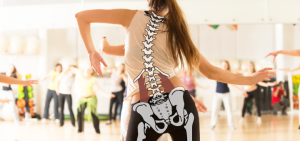 Dance your way out of hip pain – salsa moves can help relieve QL tension
Dance your way out of hip pain – salsa moves can help relieve QL tension
There is a peculiar maneuver that I often recommend to the students who have restrictions in the movement of their hips; I call it a “salsa move”. I find it very useful in both diagnosing the potential hip imbalances and loosening up the “hip hiker“ muscles that can create all kinds of back and hip issues when tight. Here is how it works. Read more >
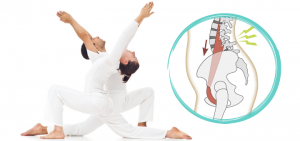 Stretching the hip flexors is not always a good idea
Stretching the hip flexors is not always a good idea
We tend to think of the psoas as a villain, because tight psoas can pull the spine out of alignment. But it can also become a victim. It works best if it has help from the muscles at the front and the back of the torso to help keep the body properly aligned, especially when it comes to maintaining the integrity of the spinal curves. If those surrounding muscles get tight and pull the pelvis put of place, this can put unnecessary stress on the psoas and impede its function. Read more >
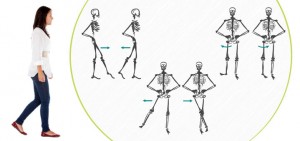 Mighty Tadasana: How to use Mountain pose to train your balance and strengthen your hips and ankles
Mighty Tadasana: How to use Mountain pose to train your balance and strengthen your hips and ankles
While walking seems easy and straightforward (just put one foot in front of the other!), in reality it is a delicate dance between the muscles of the core, hips, legs and feet. We need to keep this relationship coordinated and balanced, otherwise we can’t walk far and without pain. Walking involves shifting the weight to one leg and bearing weight on it while swinging the other leg forward, which means that every potential hip movement is relevant here: hip flexion and extension, hip adduction and abduction, as well as internal and external rotation. Read more >
Assessment yoga practice for the hips
This yoga practice for the hips will help you assess the asymmetries in your hips and give you a better idea of where the imbalances are. It includes Hip Assessment Worksheet that you can use to record your findings. You will have time to record the asymmetries that you observe throughout the practice. Read more >
Sample yoga practices
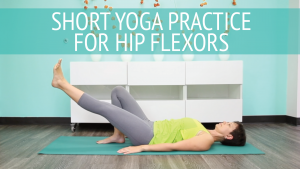 |
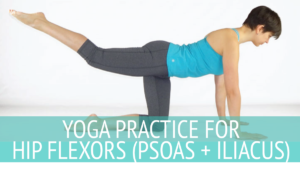 |
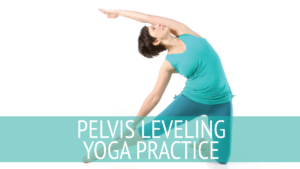 |
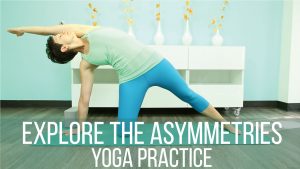 |
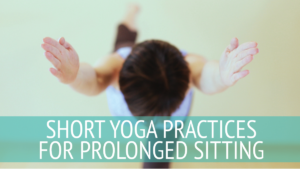 |
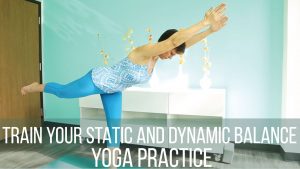 |
Take care of your hips systematically:
6-Week Yoga Series for Butt Discomfort and Hip Tension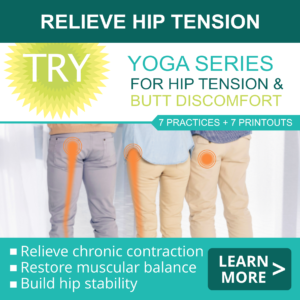
In this six-week yoga series we will focus on releasing chronic muscle contraction and restoring balanced relationships between different muscles that move and support the hips.
HOW IT WORKS
Since the hips are weight-bearing joints in your body, the main purpose of this series is to create strength and stability in your hips, so there will be very few “stretchy” movements. Stretching can be counterproductive when we are dealing with chronic muscle contraction, as it can interfere with injury healing and destabilize the joints. Instead, we focus on contracting the structures around the injured areas to increase blood flow, facilitate healing, and develop stability.
As yoga teachers, we want to help our students feel better in their bodies. This means that often we need to work with specific areas of tension and imbalance. What does it take to create an effective practice to release tension and increase range of motion in a particular part of the body? Some principles are universal, and some are unique to the target area. Here are some ideas on how you can approach it in your yoga classes, as well as some safety precautions that we need to consider. Check it out >
[jetpack_subscription_form]


